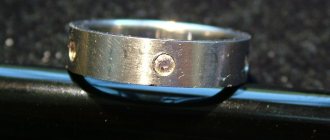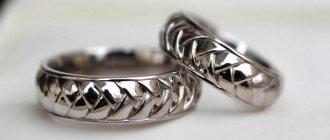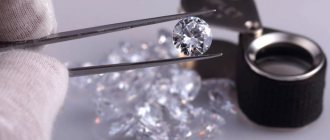January 12, 2021
During the production of nickel and copper, the precious metal palladium is formed as a result of processing anode sludge. Used in radio components to extend service life. It is used as a catalyst in chemical plants and laboratories. The price of this metal exceeds the cost of gold, so the demand for it increases every year.
How to determine palladium in radio components
Palladium is resistant to corrosion and abrasion, so radio components made with it are more durable. In Soviet times, Pd metal was used in the production of many devices, radio and television equipment. It was applied to the contacts of capacitors and connectors, it was used in circuit boards and catalysts, and in oscilloscope wire. You can find palladium in radio components found in old Soviet household appliances, batteries, and measuring instruments.
The largest amount of this precious metal is contained in KM capacitors, connectors and resistors. Capacitors were previously produced in Bulgaria, and all of them necessarily contained palladium. It is still used in the electronics, space and military industries.
How to determine palladium in radio components
How to distinguish palladium from platinum and silver
Having decided which radio components may contain palladium, proceed to the next stage. In appearance, palladium is difficult to distinguish from silver or platinum. They all have different densities, but it is not always possible to compare, because the metals must be pure. This can be done using reagents by placing a piece of the radio component in a container with nitric acid. If it dissolves, it is not silver, but palladium. Platinum dissolves exclusively in aqua regia.
Sell palladium pd
The presence of Pd in a part can be determined using a touchstone. A scratch is made on a small piece of metal by running it across the stone. Then a mixture of aqua regia and potassium iodide (10% solution) is applied to the damaged area. If a brownish-red stain appears as a result of the reaction, this indicates the presence of palladium. As a result of the reaction, potassium tetrachloropalladate is formed.
How to determine palladium in radio components
What parts and devices does it contain?
Precious metals - platinum, gold, palladium - are often used in the manufacture of radio components. Manufacturers use them to maximize the life of their products.
Due to its properties, palladium is a frequent guest in radio components. It is most often found in capacitors and microcircuits .
When extracting palladium from capacitors, you need to take into account the fact that in many of them it is alloyed with platinum . The choice of these particular elements is due to their ability to maintain the required qualities at high temperatures. The ratio of Pd and Pt differs according to the type of capacitor.
Methods for separating palladium from radio components
Pd metal can be obtained in its pure form from any parts using the refining method. It is the most common and reliable, consisting of a chain of chemical reactions. Isolation is carried out in stages using several reagents. At the first stage, the metal is dissolved in aqua regia. Then the metals contained in it are reduced: palladium - with a solution of potassium iodide, palladium - with ammonia, gold - with zinc.
Finally, the palladium filtrate is mixed with hydrochloric acid. The orange-yellow precipitate resulting from the reaction is washed with water and alcohol, dried and melted. There are two more ways to obtain palladium from radio components: the etching method and the electrolytic method.
Receipt
Palladium is obtained mainly from the processing of sulfide ores of nickel, silver and copper. Some of the world's production (about 10%) is recovered from recycled materials[2].
From a solution of a mixture of noble metals in aqua regia after the precipitation of gold and platinum, dichlorodiammine palladium Pd(NH3)2Cl2 is precipitated, purified by recrystallization from an ammonia solution of HCl, decomposed to powdered palladium by calcination in a reducing atmosphere, and the palladium powder is melted down[2].
By reducing solutions of palladium salts, palladium black is obtained—fine-crystalline palladium powder[2].
Compact metal palladium is also obtained by electrodeposition from nitrite and phosphate acid electrolytes, for example, using Na2[Pd(NO2)4][2].
Notes
- Michael E. Wieser, Norman Holden, Tyler B. Coplen, John K. Böhlke, Michael Berglund, Willi A. Brand, Paul De Bièvre, Manfred Gröning, Robert D. Loss, Juris Meija, Takafumi Hirata, Thomas Prohaska, Ronny Schoenberg, Glenda O'Connor, Thomas Walczyk, Shige Yoneda, Xiang-Kun Zhu.
Atomic weights of the elements 2011 (IUPAC Technical Report) // Pure and Applied Chemistry. — 2013. — Vol. 85, no. 5. - P. 1047-1078. — DOI:10.1351/PAC-REP-13-03-02. - ↑ 123456789101112131415
Palladium // Chemical encyclopedia: in 5 volumes / Knunyants I. L. (chief editor). - M.: Great Russian Encyclopedia, 1992. - T. 3: Med-Pol. - pp. 440-441. — 639 p. — 48,000 copies. — ISBN 5-85270-039-8. - Periodic table on the IUPAC website
- Voitkevich V.G.
Origin and chemical evolution of the Earth / ed. L. I. Prikhodko. - M.: Nauka, 1973. - 168 p. - “Methodology for carrying out work on the comprehensive recycling of secondary precious metals from used computer equipment” (APPROVED BY GOSTELECOM RF 10/19/1999)
- Sberbank website.
- Norilsk metal - What do we know about palladium?
- Bulletin of foreign commercial information, No. 95, 08.23.08, p.12.
- Thomson Reuters GFMS | Analytics and content for metals professionals | Thomson Reuters Eikon
- [1]
Where is palladium mined?
In 1803, British chemist William Wollaston was the first to describe what naturally occurs in palladium. The scientist obtained the noble metal from platinum ore by dissolving it in aqua regia and adding mercuric cyanide.
Explored reserves of primary Pd deposits on the territory of the Taimyr Peninsula amounted to 62 million ounces
Raw materials for industrial and jewelry production are mined in Russia, North America (Canada, USA), Africa (South Africa), Europe (Austria) in placer and primary deposits. In total production, nuggets account for 2%; 98% of Pd is contained in platinum group ores .
Palladium jewelry: current samples and forms of existence of the metal
There is a category of jewelry scrap where palladium is accepted, like gold, by weight of each gram. Precious metal waste has its own criteria, which are determined by the breakdown on the product (the most common are 500 and 850) and additionally using measuring equipment. For the highest sample they give the maximum price; it increases if the lot being delivered has large volumes.
Palladium wedding rings
The flexibility of palladium alloys has already been mentioned, but if you touch the pure substance it is too flexible to represent independent jewelry. Therefore, both alloys with the addition of palladium (only 1-2% make gold especially shiny) and, conversely, alloying this metal with other elements, which gives the products relative strength, remain relevant.
Read also: How to calculate roof area
Today, palladium occupies third place in the price hierarchy, behind gold and platinum. However, in terms of commodity turnover, this list is supplemented by silver.
How to recognize a fake by the seams
Typically, gold consists of component parts, each of which is soldered together. For example, if we are talking about chains, bracelets, etc. The soldering can be seen even on the rings, but you will have to look long and hard.
Where components are soldered, real gold has different, iridescent colors. If they are not there, and the accessory is made in one color, then this is a fake! It will also not be difficult to examine this flaw, and even a beginner can cope with this matter.
RESERVES AND PRODUCTION
Geologists have calculated that palladium accounts for 6% of the Earth's interior. That is, there is twice as much of this noble metal in the depths as gold. Palladium is isolated from platinum, which means it is mined in the same deposits. These are located on the Kola Peninsula and the Urals. Deposits have also recently been explored near Norilsk. The platinum of these deposits contains almost half of palladium. Outside of Russia, the lands of Alaska, Australia, Colombia, Canada, and Africa are famous for the presence of valuable metal. The last two countries are rich in nickel ores. When processing them, palladium is also extracted. Therefore, it is Africa and Canada that lead in the production of this metal. Supplies of palladium in the world in 2007 amounted to 267 tons (including Russia - 141 tons, South Africa - 86 tons, USA and Canada - 31 tons, other countries - 9 tons). Palladium consumption in 2007 was 107 tons in the automotive industry, 40 tons in the electronics industry, and 12 tons in the chemical industry.
Palladium is mainly obtained by processing sulfide ores of nickel, silver and copper.
Platinum
The substance is a chemical element, a native silver-white metal, very similar to silver, but unlike the latter, platinum is a refractory, acid-resistant, corrosion-resistant metal, due to which it is widely used in various industries, for the production of capacitors, resistors, switches, connectors in various devices and equipment. Scientists compare platinum to salt; it is impossible to do without it in electrical engineering, radio engineering, precision instrument making, and the aerospace industry. Almost no modern technology can exist without Pt. Platinum is used in alloys in its pure form.
Use of pure platinum
- Grids and cathodes in electrolysis, dies, winding wire, thermocouples, electrical resistance furnaces.
- Chemical industry - catalyst in the production of sulfuric and nitric acid, for the oxidation of ammonia, dehydrogenation, hydrogenation, alcohol reduction.
- Jewelry industry.
- Platinization of dishes, production baths and tanks.
Use of platinum in alloy
- Electronics industry – contacts, vacuum devices, electrodes, thermocouple wire.
- Chemical – catalysts, filters, electrodes, meshes.
- Medicine – dentistry, traumatology and surgery (prostheses, instruments).
This is only a small part of where this truly precious metal is used. The use of platinum is expanding in the automotive industry, where air purifiers and neutralizer filters are needed.
It is clear that palladium and platinum are not just precious metals, but also extremely necessary substances in many areas of production, and therefore our national economy needs them. The company buys various REC, devices containing Pt, Pd. If you want to offer us something, but are not sure how suitable it is for sale, contact our managers and clarify all questions regarding cooperation.
Hello, dear friends. Today we will talk about whether palladium is contained in radio components, where exactly one should look for light platinum and find out which method of treating it is most effective.
Area of application of palladium
The value of palladium is due to its physical and chemical properties:
- high heat of fusion exceeding 1.5 thousand degrees;
- resistance to water and alkalis;
- good electrical conductivity;
- does not come into contact with ammonia.
In this case, the metal reacts with concentrated nitric acid, and therefore the latter is used for its refining.
The applications of palladium are summarized in the table below.
| Application area | Purpose |
| Catalysts | Palladium catalysts are used to crack oil or detect microscopic accumulations of carbon monoxide in the air. |
| Hydrogen purification | The metal is used to deeply purify hydrogen from various impurities. |
| Electroplating | Palladium chloride is used in electroplating. The latter is used as metallization of dielectrics, for example, in the production of electrical circuit boards. |
| Electrical contacts | Due to their high resistance to wear, palladium alloys are used in the military and aerospace industries to create electrical devices and microcircuits. |
| Jewelry | Adding precious metal to gold allows you to change the color of the latter. |
| Medicine | For the manufacture of medical devices, dentures. |
The material is also used to create:
- measuring instruments in order to prevent the formation of corrosion on their surface;
- chemical equipment such as distillation cubes and others.
Palladium coating helps prevent sparking in electrical contacts.
All products listed in the table can become potential sources of refined metal.
origin of name
Named after the asteroid Pallas, discovered by the German astronomer Olbers in 1802, that is, shortly before the discovery of palladium. In turn, the asteroid is named after Pallas Athena from ancient Greek mythology. Palladium, or Palladium, is the legendary wooden image of Pallas Athena that fell from the sky; according to the prophecy of Helen (son of Priam), Troy will remain indestructible as long as this talisman is kept within its walls. According to legend, only after the goddess’s favorites, Odysseus and Diomedes, stole Palladium during a night raid, did this stronghold fall.
Examples of refining
Refining is carried out using various methods. To highlight the material at home, the best choice would be:
Electrolysis requires highly concentrated sulfuric acid. It replaces the electrolyte. Lead is used as the cathode, and the anode is an electrical component from which the required material is released. During the procedure, the original copper and brass alloys remain intact. After electrolysis, palladium with various impurities is released. To remove them, the metal is placed in hydrochloric nitric acid.
Before starting the procedure, a voltage of 11-13 volts is applied to a container filled with electrolyte. Exposure to electric current leads to the formation of powder or flakes in the vessel. It is in this form that palladium is released.
Ceramic capacitors
To carry out refining, it is necessary to prepare expensive components and appropriate utensils. Therefore, in order to avoid additional costs, it is recommended that before starting work, prepare a sufficient amount of starting materials, which contain a lot of palladium.
In modern electronics the content of this material is small. And in order to obtain metal in a relatively large volume, you should stock up on the required number of ceramic capacitors: KM-3, KM-4, KM-5 and KM-6. It is they, according to experts, that meet the above conditions. However, ceramic capacitors are expensive.
You can find CM in electronics produced during the Soviet era. Ceramic capacitors have previously been used in:
- analog technology;
- computers;
- generators;
- measuring devices (E7-14, P2-73);
- oscilloscopes (C-114, 116 and others) and so on.
Ceramic capacitors are the optimal starting material for refining. They can be found in Soviet electrical engineering or contact people involved in gold production. The latter often do not pay attention to palladium.
Where is refined metal accepted?
Pure palladium is accepted at a price of up to 2,700 rubles per gram.
However, it should be remembered that illegal trafficking in precious metals is prohibited by law . And if you are refining palladium at home, you are unlikely to have a package of permits.
For law-abiding citizens, there is only one way out of the situation - to hand over radio components containing this element to specialized purchasing points that have a license for circulation .
In companies buying metal, there is the following division:
- knitting needles, needles, palladium contacts and others (alloy content 18-28%) - cost per gram 230-360 rubles ;
- in products with a content of 80%, for example, winding from strings - 1000 rubles .











